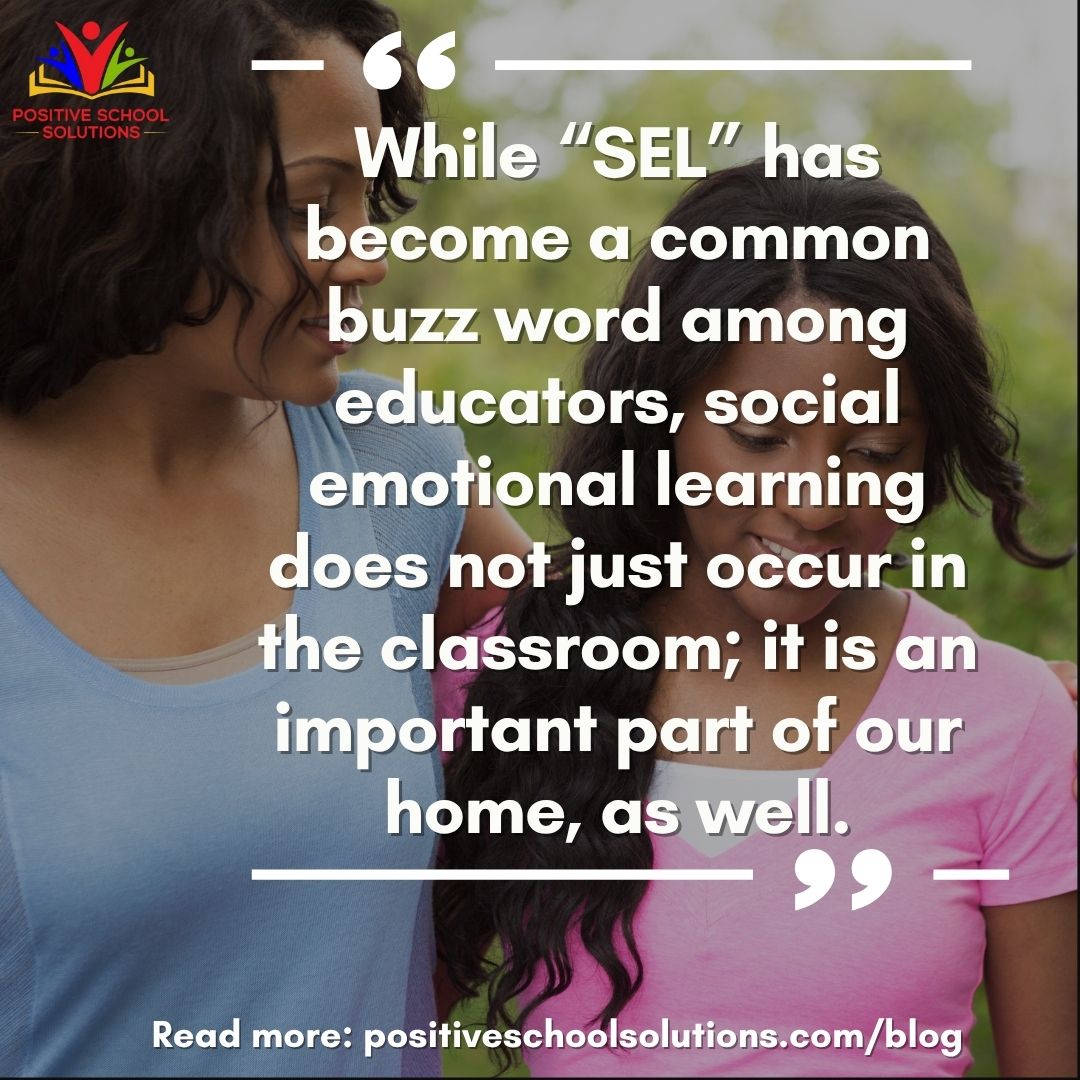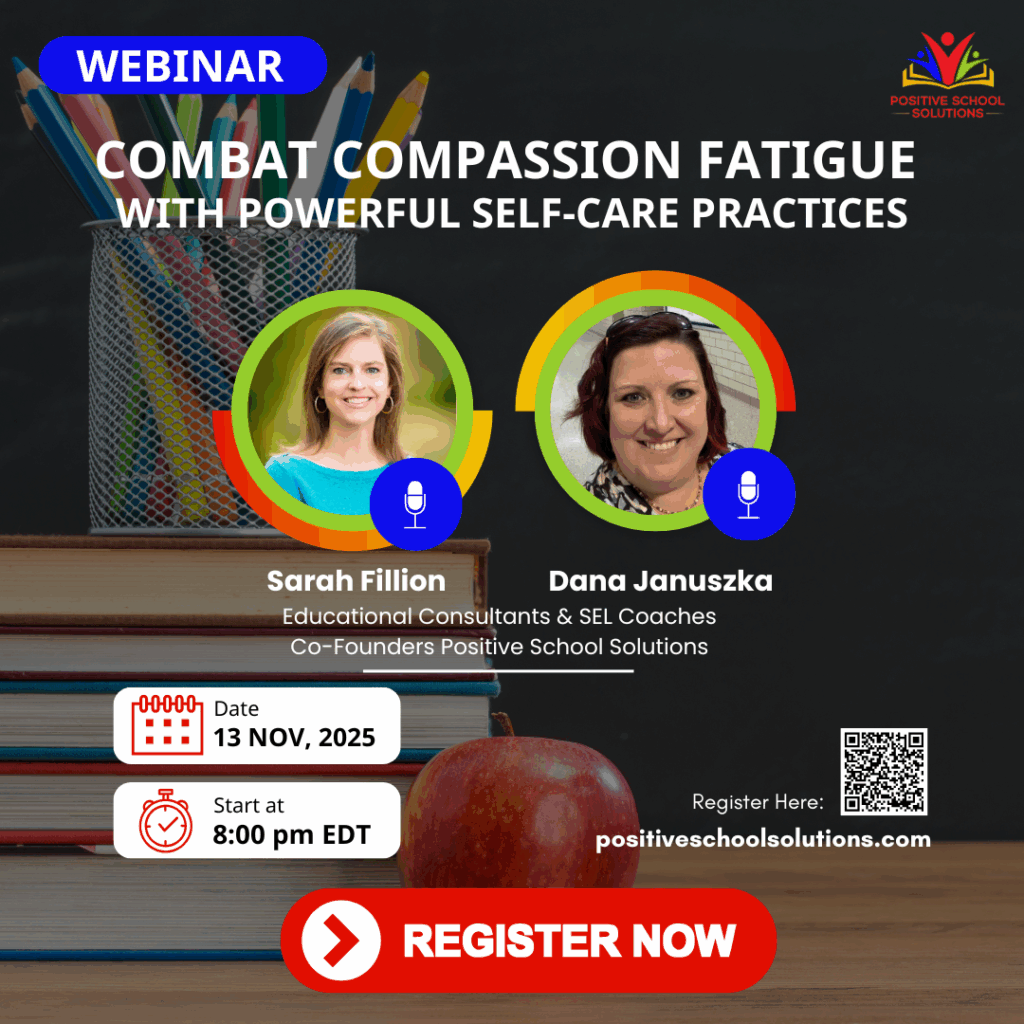 Social emotional learning, commonly referred to as SEL, represents the set of skills children need to thrive throughout life. The Collaborative for Academic, Social, and Emotional Learning (CASEL), outlines the five core SEL competencies: self-awareness, self-management, social awareness, relationship skills, and responsible decision making. While “SEL” has become a common buzz word among educators, social emotional learning does not just occur in the classroom; it is an important part of our home, as well.
Social emotional learning, commonly referred to as SEL, represents the set of skills children need to thrive throughout life. The Collaborative for Academic, Social, and Emotional Learning (CASEL), outlines the five core SEL competencies: self-awareness, self-management, social awareness, relationship skills, and responsible decision making. While “SEL” has become a common buzz word among educators, social emotional learning does not just occur in the classroom; it is an important part of our home, as well.
“Family life is our first school for emotional learning,” states Daniel Goleman, the author of the book Emotional Intelligence. Goleman shares that through family life “we learn how to feel about ourselves and how others will react to our feelings; how to think about these feelings and what choices we have in reacting; how to read and express hopes and fears.”
Here are five social emotional learning strategies you can use at home to support each of CASEL’s SEL competencies:
Self-Awareness: Identifying one’s thoughts, feelings, and strengths, and recognizing how they influence one’s choices and actions.
1. Use language to focus on effort instead of ability.
When your child is working hard and persisting through a tough homework assignment, try saying, “I know you worked really hard on that assignment. You must feel proud of the work you did.”
Likewise, if they have spent hours “cleaning” their room, it’s important to recognize the effort “Wow, you have spent a lot of time on this! What are you most proud of here?”
Social Awareness: Identifying and understanding the thoughts and feelings of others, respecting their rights, and appreciating diversity.
2. Look for ways your family can give back.
Teaching our families to look at the world is a great way to teach empathy. Encouraging children to help a neighbor clean up the yard, donate clothing or toys they have outgrown, or get involved in community service projects through school are ways children can better understand what others may be experiencing.
Self-Management: Establishing and working toward short- and long-term goals, and handling emotions so that they facilitate rather than interfere with the task at hand.
3. Help your child to make a schedule or list of to-do’s.
Creating a daily schedule together, or a list of tasks to accomplish, can help children stay structured while maintaining a sense of predictability and safety. By involving them in the process, they are able to practice both self-management and responsible decision making skills.
A simple way to start is with planning out time to do homework. Consider printing this simple schedule and putting it inside a sheet protector to allow your child to plan with you the best time of the evening to get their homework done each day. When we involve children in the decision making process, their sense of commitment to complete the task independently also increases.
Responsible Decision Making: Generating, implementing, and evaluating positive and informed solutions to problems, and assuming responsibility for personal decisions and behaviors.
4. Engage in activities as a family.
Playing card, board, or video games together, simply sitting to watch a movie, or going for a walk are a great way to get kids talking. Even just having them help you make dinner or with routine tasks fosters cooperation and teamwork.
Relationship Skills: Communication, listening, and negotiation skills to establish and maintain healthy and rewarding connections with individuals and groups.
5. Write a letter or draw a picture for a family member or loved one.
Thinking about the people we care about gives us reasons to feel joy. Writing letters or drawing pictures for others also helps children reinforce the academic skills of writing and addressing a letter. Asking children who they could send a message to that might lift their spirits or bring them a smile is another way we teach children how to build and maintain connections – especially if someone writes back!
What are some of your favorite strategies for connecting with your children and practicing these Social Emotional skills at home?
Written by Dana Januszka and Sarah Fillion for Positive School Solutions 2021

